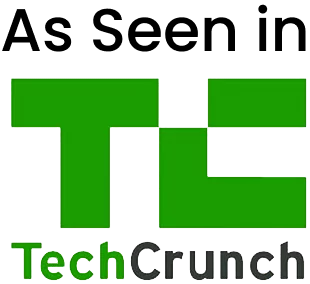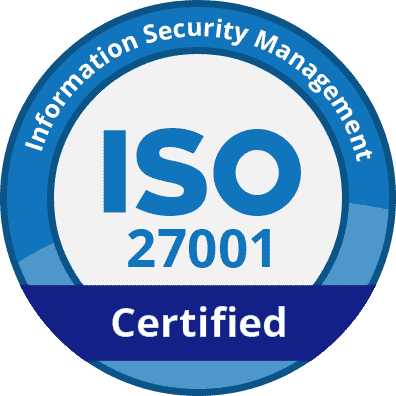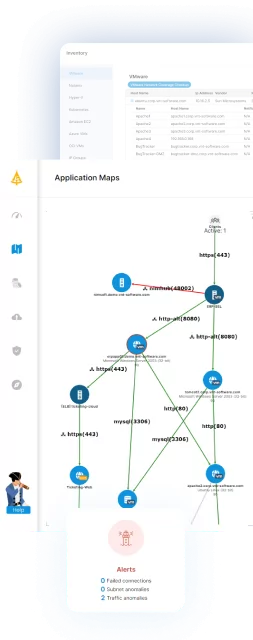What is IT System Mapping and Why is it Important?
IT system mapping is a technique that involves the identification, documentation, and visualization of all components within an IT environment. It offers a bird’s eye view of how different IT elements connect and interact within your business ecosystem. In addition, IT mapping can provide a picture of how data flows, network connections are established, and how different software applications and hardware devices are interconnected.
Table of Contents
ToggleBenefits of System Mapping
System mapping has many benefits in complex IT environments, including:
Streamlined IT operations and maintenance: By having a clear picture of your IT landscape, you can manage and maintain your IT assets more effectively. You can identify potential issues before they escalate into major problems, schedule preventive maintenance activities, and ensure your IT systems are always up and running.
Enhanced security posture: By understanding your IT landscape in depth, you can identify potential security vulnerabilities and address them proactively. You can also monitor your network more effectively, detect anomalies quickly, and respond to potential security threats in a timely manner. Learn more: Guide to Network Mapping Tools
Efficient resource allocation: By understanding your IT environment, you can identify underutilized resources and re-allocate them where they are most needed. This not only optimizes your resource utilization but also reduces unnecessary costs. IT system mapping can also help you plan for future IT investments by providing insights into your current IT capacities.
Easier compliance and auditing: Many industries are subject to strict IT compliance regulations, requiring businesses to maintain comprehensive documentation of their IT environments. IT system mapping provides this documentation, making it easier to demonstrate compliance during audits.
This is part of a series of articles about IT Mapping
What are the Key Components of IT System Mapping?
Hardware Inventory
The first pillar of IT system mapping is hardware inventory. A comprehensive hardware inventory provides an overview of all the physical components of an organization’s IT system. This could range from desktop computers, laptops, servers, routers, switches, printers, to even mobile devices.
Keeping a detailed inventory of all hardware components allows IT professionals to manage resources more effectively. It helps in identifying outdated or underperforming equipment, thereby aiding in planning for upgrades. It also assists in troubleshooting issues, as the inventory provides a clear idea of what hardware is in place and where it’s located.
Moreover, a hardware inventory can significantly aid in security management. By knowing what hardware is in place, IT professionals can ensure that each piece of equipment is patched and unaffected by security vulnerabilities, reducing the risk of potential breaches.
Software Asset Inventory
A software asset inventory includes all the software applications used by an organization, including operating systems, business applications, and utility software.
A comprehensive inventory of software assets allows an organization to manage licenses more effectively, ensuring compliance with license agreements, and avoiding potential legal issues. It also helps in planning for upgrades, as it provides a clear picture of the software currently in use.
Moreover, understanding the software assets in place can aid in troubleshooting issues, as it allows IT professionals to quickly ascertain whether a problem is due to software or hardware.
Network Architecture
Network architecture refers to the design of a computer network, including its physical and logical layout. Understanding the network architecture is crucial for managing and maintaining the network. It allows IT professionals to identify potential weak points, plan for upgrades, and troubleshoot issues. It also assists in creating a secure network, as it provides a clear picture of where potential vulnerabilities may lie.
IT system mapping can help provide a picture of the current network architecture, and help IT teams understand how network architecture is changing over time. This is especially important in large organizations with multiple interconnected networks.
IT Personnel and Roles
Another aspect of IT system mapping is understanding who is responsible for what in the IT department. This ensures that tasks are allocated appropriately, that everyone knows their responsibilities, and that there are no gaps in coverage.
Moreover, a clear understanding of IT roles can aid in troubleshooting. It allows for quick identification of who to contact when a specific issue arises, reducing downtime and increasing efficiency.
Data Storage and Management
The final aspect of IT system mapping is data storage and management. This refers to how an organization’s data is stored, accessed, and managed.
Understanding your data storage and management systems is vital for ensuring data integrity and security. It allows for effective backup and disaster recovery planning, ensures compliance with data protection laws, and helps in identifying potential vulnerabilities.
Moreover, a clear understanding of data management practices can assist in identifying areas for improvement. It can highlight inefficiencies, potential bottlenecks, and areas where data could be better utilized.
Challenges in IT System Mapping
Complexity of Modern IT Environments
The IT landscape has grown exponentially in complexity over the years. The proliferation of technologies such as cloud computing, virtualization, and Internet of Things (IoT) has resulted in IT environments that are multifaceted and intricate. These complexities pose a significant challenge to IT system mapping.
Dynamic Nature of IT Infrastructure
Gone are the days when an organization’s IT infrastructure remained static for years on end. Today, IT systems evolve at a rapid pace to keep up with advancements in technology and changing business needs. Therefore, an IT system map that is accurate today can quickly become outdated tomorrow.
Related content: Read our guide to IT infrastructure mapping
Scalability and Resource Constraints
Scalability is another challenge that IT professionals often encounter in system mapping. As organizations grow, their IT systems also expand. This expansion can be in the form of new servers, additional applications, or increased network devices. IT mapping needs to keep up with rapid scalability and help organizations identify resource constraints.
Ensuring Stakeholder Buy-In and Collaboration
IT system mapping requires the collaboration of various stakeholders, including IT personnel, management, and even end-users. However, getting everyone on board can be a tough sell. Some stakeholders may not see the value in investing time and resources into system mapping. It is critical to overcome these hurdles and ensure stakeholder buy-in, to ensure that IT mapping is not only implemented in the organization, but also used to its full potential.

Lanir specializes in founding new tech companies for Enterprise Software: Assemble and nurture a great team, Early stage funding to growth late stage, One design partner to hundreds of enterprise customers, MVP to Enterprise grade product, Low level kernel engineering to AI/ML and BigData, One advisory board to a long list of shareholders and board members of the worlds largest VCs
Tips from the Expert
In my experience, here are tips that can help you better leverage IT system mapping:
- Implement continuous discovery Adopt tools that support continuous discovery of IT assets to keep your system map up-to-date automatically, ensuring it reflects real-time changes in your environment.
- Utilize machine learning for anomaly detection Incorporate machine learning algorithms to detect anomalies in your system map. This helps in identifying unusual patterns that could indicate potential issues or security threats.
- Integrate with incident management systems Connect your IT system mapping tools with your incident management systems to quickly correlate issues with specific components and dependencies, speeding up root cause analysis and resolution.
- Focus on end-to-end service mapping Map not just individual components but also end-to-end services, including all dependencies and interconnections, to get a holistic view of how services are delivered and identify single points of failure.
- Incorporate user experience metrics Include user experience metrics in your system map to understand how changes in infrastructure impact end-users, enabling more user-centric IT management.
Best Practices for Effective IT System Mapping
Now that we’ve covered the challenges, let’s dive into the best practices for effective IT system mapping.
Ensuring Comprehensive Coverage of IT Assets
An IT system map is only as good as the data it represents. Therefore, it’s crucial to ensure that every component of the IT environment is adequately represented on the map. This process involves identifying all IT assets, including hardware, software, network devices, and data. It also includes mapping their interactions and dependencies. Automated discovery techniques are crucial in this process.
Keeping the IT System Map Current
The dynamic nature of IT infrastructure can quickly render a system map obsolete. Therefore, it’s critical to update the system map regularly to reflect changes in the IT environment.
This process might involve automating the update process as much as possible. For example, IT asset management tools can automatically discover and map new assets, and application dependency mapping tools can automatically identify how applications communicate with and rely on each other.
Using the Map for Proactive Decision-Making
An IT system map is more than just a visual representation of the IT environment. It’s a powerful tool that can inform strategic decisions. For example, the system map can reveal bottlenecks that affect system performance. It can also identify vulnerabilities that pose security risks. By using the IT system map for proactive decision-making, organizations can improve system performance, enhance security, and optimize resource utilization.
Training and Empowering Teams to Utilize the System Map Effectively
It’s important to train IT personnel on how to use the system map. This training should cover how to update the map, interpret its data, and use it for decision-making. Additionally, organizations should empower their teams to use the system map as a tool for problem-solving and strategic planning.
How Faddom Helps With IT Mapping
Keeping IT system maps accurate and up-to-date can be challenging in today’s dynamic environments. Faddom makes it easy by automatically visualizing your entire IT infrastructure—on-premises, cloud, or hybrid—in under an hour.
With Faddom, you can:
- Keep your system maps continuously accurate and up-to-date.
- Simplify troubleshooting, compliance, and resource optimization.
- Understand application dependencies and reduce hidden risks—effortlessly.
No agents, no disruptions—just complete visibility.
Start your free trial today and take control of your IT landscape!










